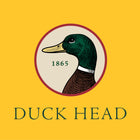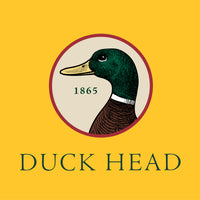An Old School Oyster Roast
The original American oyster roast took place in the early 1800s in New York and the tradition slowly migrated south. Rumor has it that the first time the phrase “oyster roast” was overheard in Charleston, S.C. was in 1892. Duck Head was founded in 1865 – just as this great culinary winter pastime was gaining a foothold as an outdoor tradition. We like to think Duck Head founders George and Joe O’Bryan hosted a roast or two themselves back in the day. And we know, without a doubt, that Duck Head trousers have been a wardrobe staple at roasts far and wide for generations. Given that oyster season is upon us we encourage you to throw an old school roast of your own following these simple guidelines...

The Plan:
Whether you’re on the banks of a salty marsh, shooting clays in the field, or just getting together in your backyard, this laid-back ritual is always a crowd-pleaser and easy to pull off. All you have to do is score some oysters, build a fire in a pit, soak some burlap and kick back with some cold beer and watch the delicious, smoky magic unfold...
The Equipment:
- Fire Wood
- Square Nosed Shovel
- Burlap
- Expanded Sheet Metal or Chicken Wire
- 4 Cinder Blocks
- Oyster Knives
- Work Gloves
- 2 Coolers: 1 to transport the oysters and store them in until cooking; 1 to keep that cold beer cold - Plenty of Ice
- Picnic or Work Table
- Newspaper or Butcher Paper
- Paper Towels
The Eats:
- Bushels of Oysters
- Saltine Crackers
- Lemons
- Cocktail Sauce
- Horseradish
- Hot Sauce
- Sides: Potato Chips, Pimento Cheese, Coleslaw, etc.
- Beer, White Wine, and Seltzers

The Process:
- First and foremost you need to buy the oysters. Local seafood, meat, and farmers’ markets are great sources for quality oysters. A good rule of thumbs is a 50 pound bushel will feed roughly 5 people.
- Hit the hardware store for a 4’ long and 2’ wide piece of sheet metal or chicken wire., and 4 cinder blocks to suspend the metal over the fire. Grab some firewood too – enough to keep things smoking all afternoon. You can find your burlap at the hardware or gardening store.
- Gather up the other accompaniments listed above to go with the oysters and any side dishes you may want to fill out the spread. AND fill that cooler with ice, pale ales, a crisp white wine, and assorted seltzers to make sure you have a good variety of options for washing down all that briny goodness.
- Dig a pit. Then place the cinder blocks in 4 corners just outside the fire pit and build your fire in the middle. Start the fire. While you’re waiting on the fire to get going you can scrub the oysters “clean” with a brush and cold water. Go ahead and soak your burlap now too. Once the fire gets going, place the metal or wire over the fire so you have a slightly elevated cooking surface. You want your fire to have a steady, low-and-slow burn so tend to it accordingly throughout the day.
- Wait for the metal to heat up (test it by splashing water on it and listen for that sizzle) then scatter a few dozen oysters onto the metal with your shovel. Spread them out in a single layer (do not stack them) so they will cook evenly as a group. Cover them with the wet burlap and cook for 8-10 minutes.
- While the oysters are cooking you can spread paper out on the “dining” table and get the condiments and paper towels out.
- Once the oysters start to open slightly they are ready. The longer you cook the more they will open but they will also lose some of the briny juice that makes for delicious eating so don’t overcook them.
- Have guests open their oysters with gloves and an oyster knife. Everyone around the table shucking their own is a big part of the casual fun that unfolds on a day like this. Serve over saltines or straight out of the shell. Garnish with a dash of hot sauce, a squeeze of lemon, or a dollop of cocktail sauce. Slurp and repeat!
The Playlist:
There’s no rule book outlining the best music to play on a day like this but one thing’s for sure – great music makes an oyster roast a much fuller experience. Whether you – or an invited guest – can pick a guitar, play the harmonica or have a knack for spinning tunes you need to bring that talent to the party. Great music is the “secret sauce” to the perfect oyster roast.
The End:
An oyster roast never really ends...It kind of just winds down or leads to another party, or another outdoor activity, or a ballgame on TV. This casual approach to entertaining is organic like that. It’s simple to host and your guests are actively engaged in making a festive day of it. And cleanup is a breeze given all you really used was a newspaper, paper towels, and a recycling bin. In the end, it’s easy to see why the Old School Oyster Roast will forever be an American classic – and a Duck Head favorite.
We would love to hear your favorite oyster roast memory or any special tips and tricks!



Leave a comment